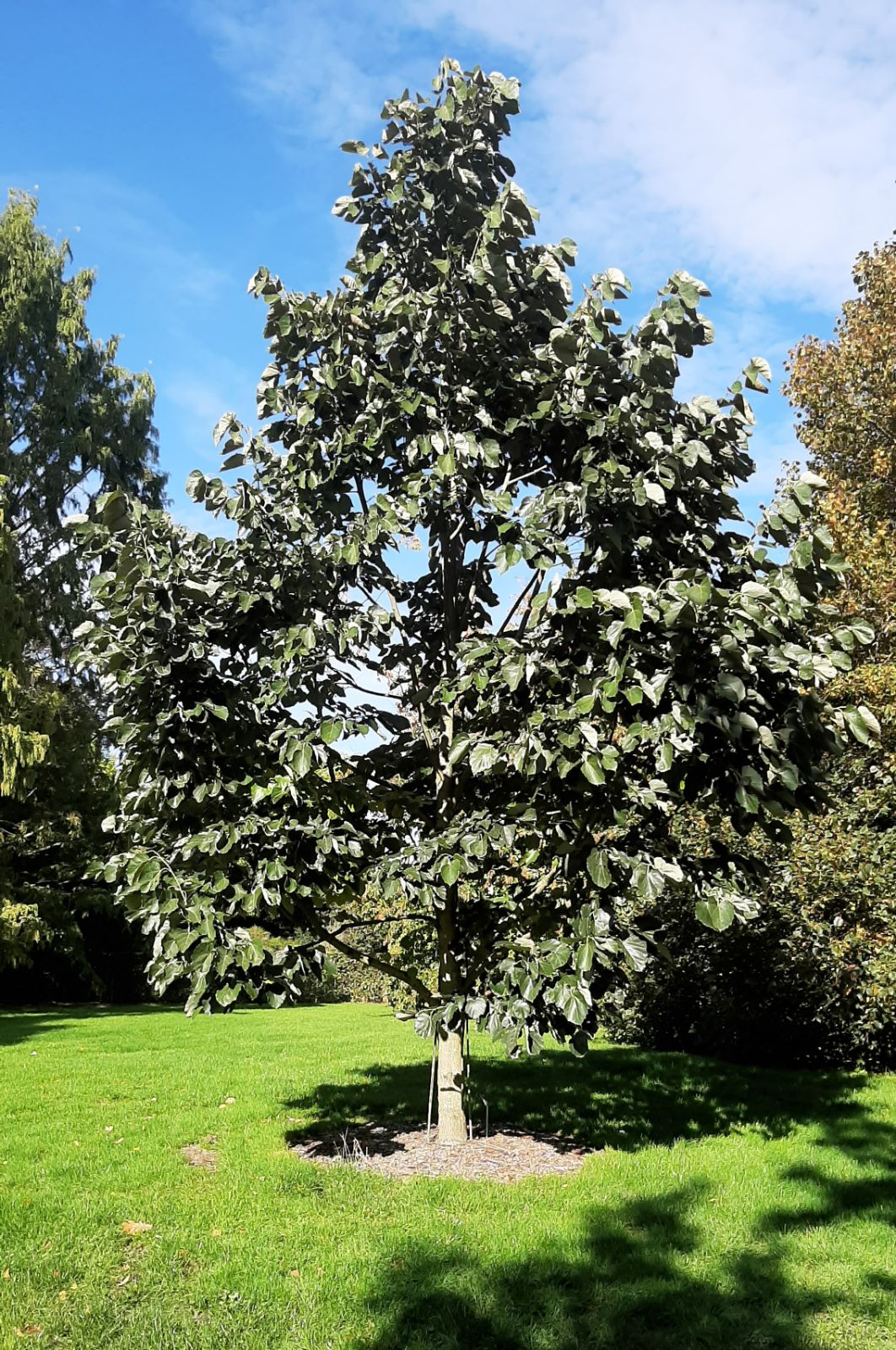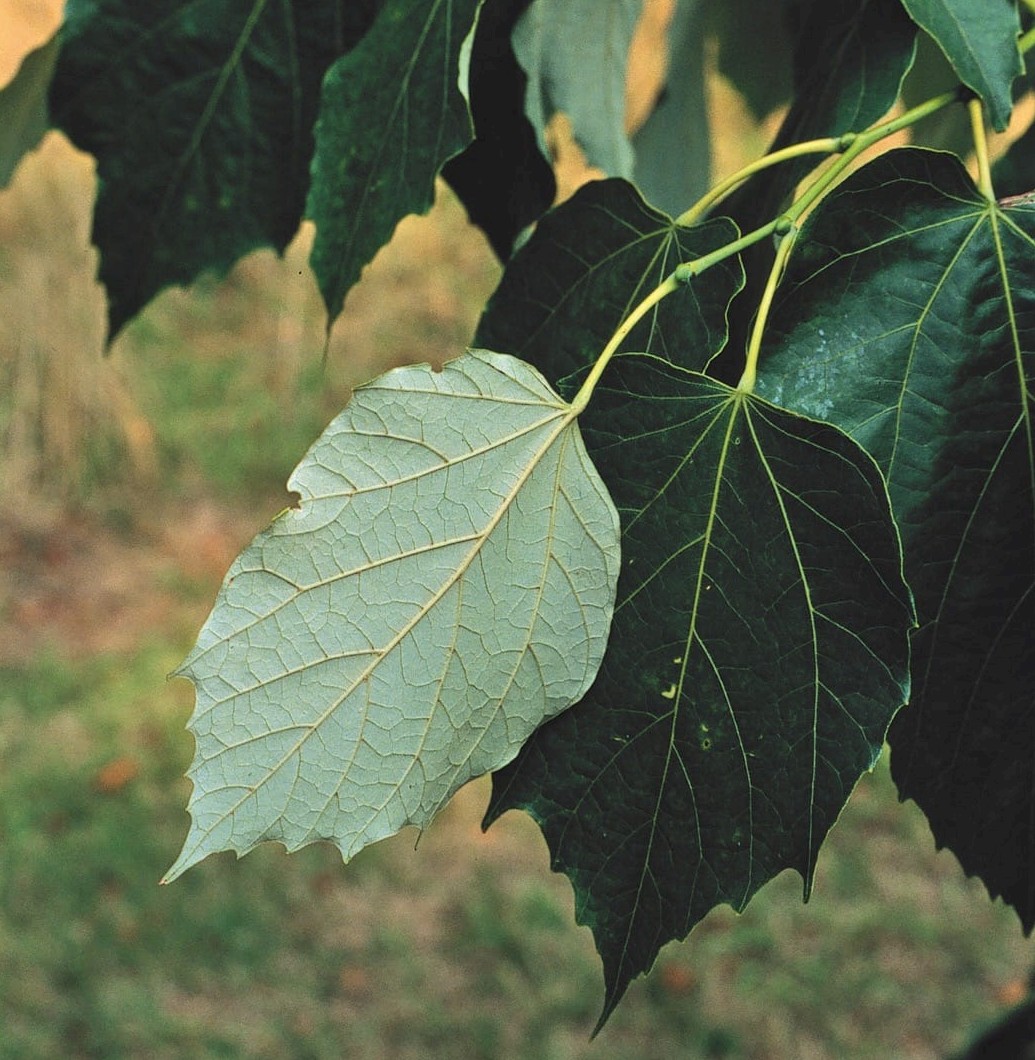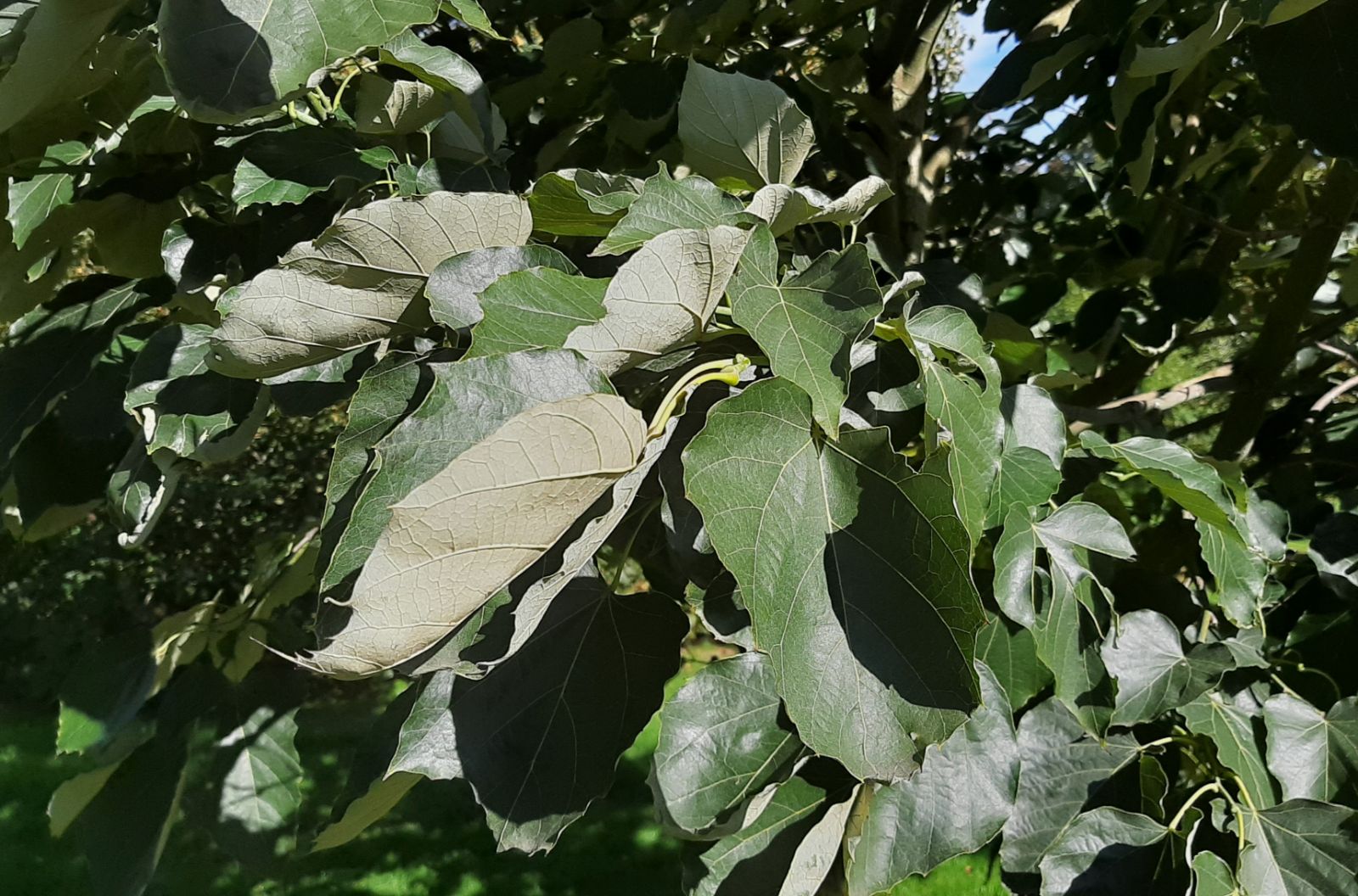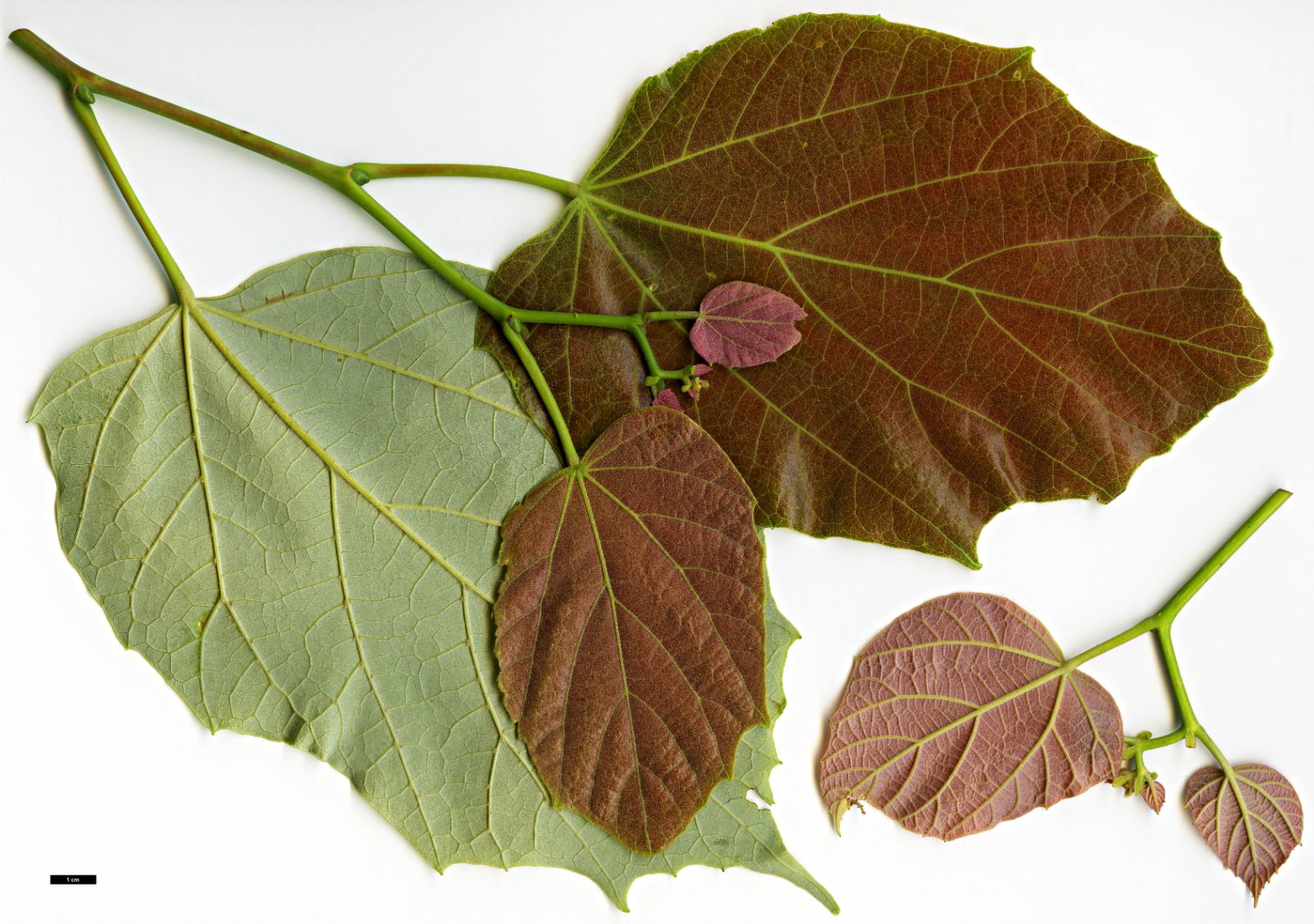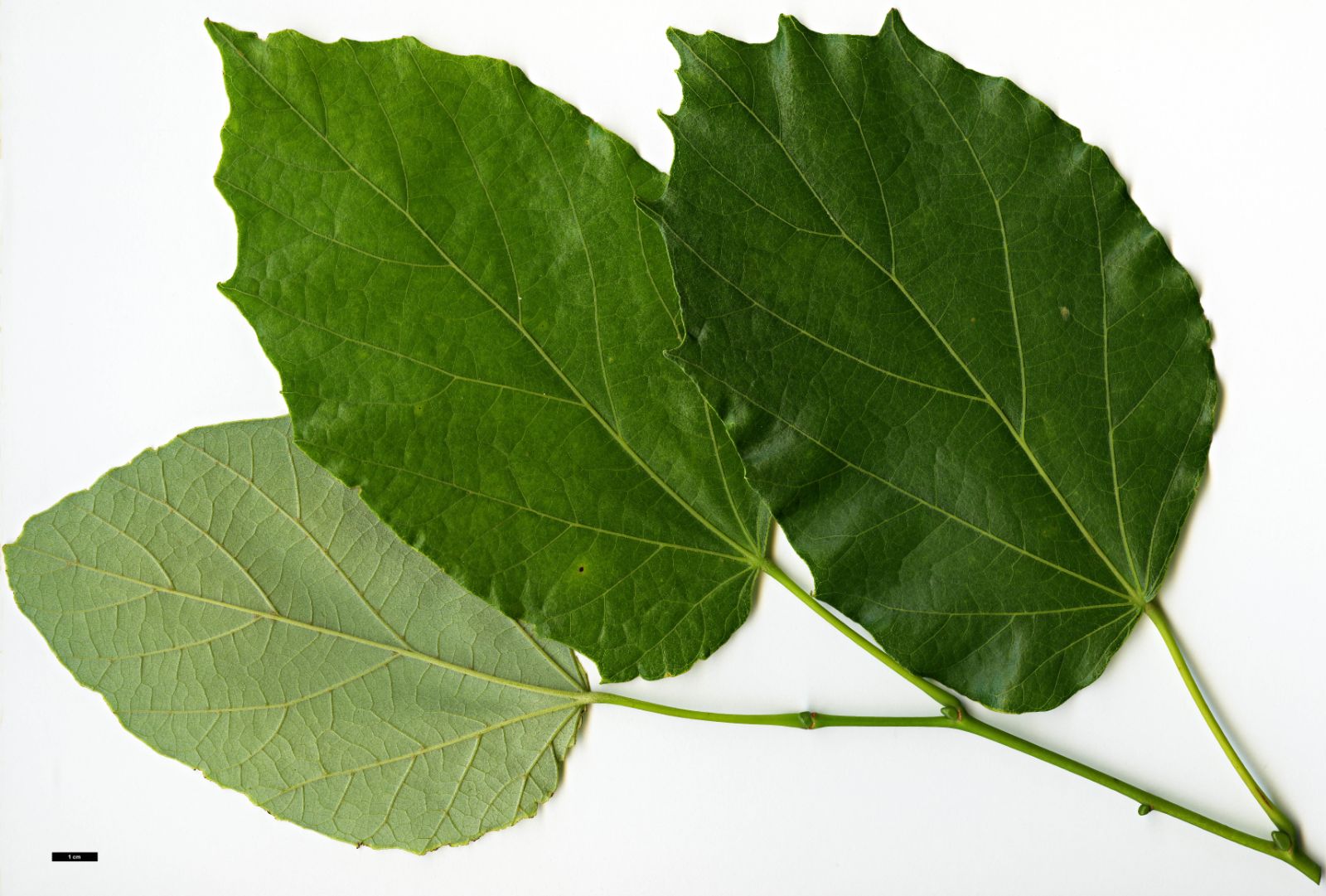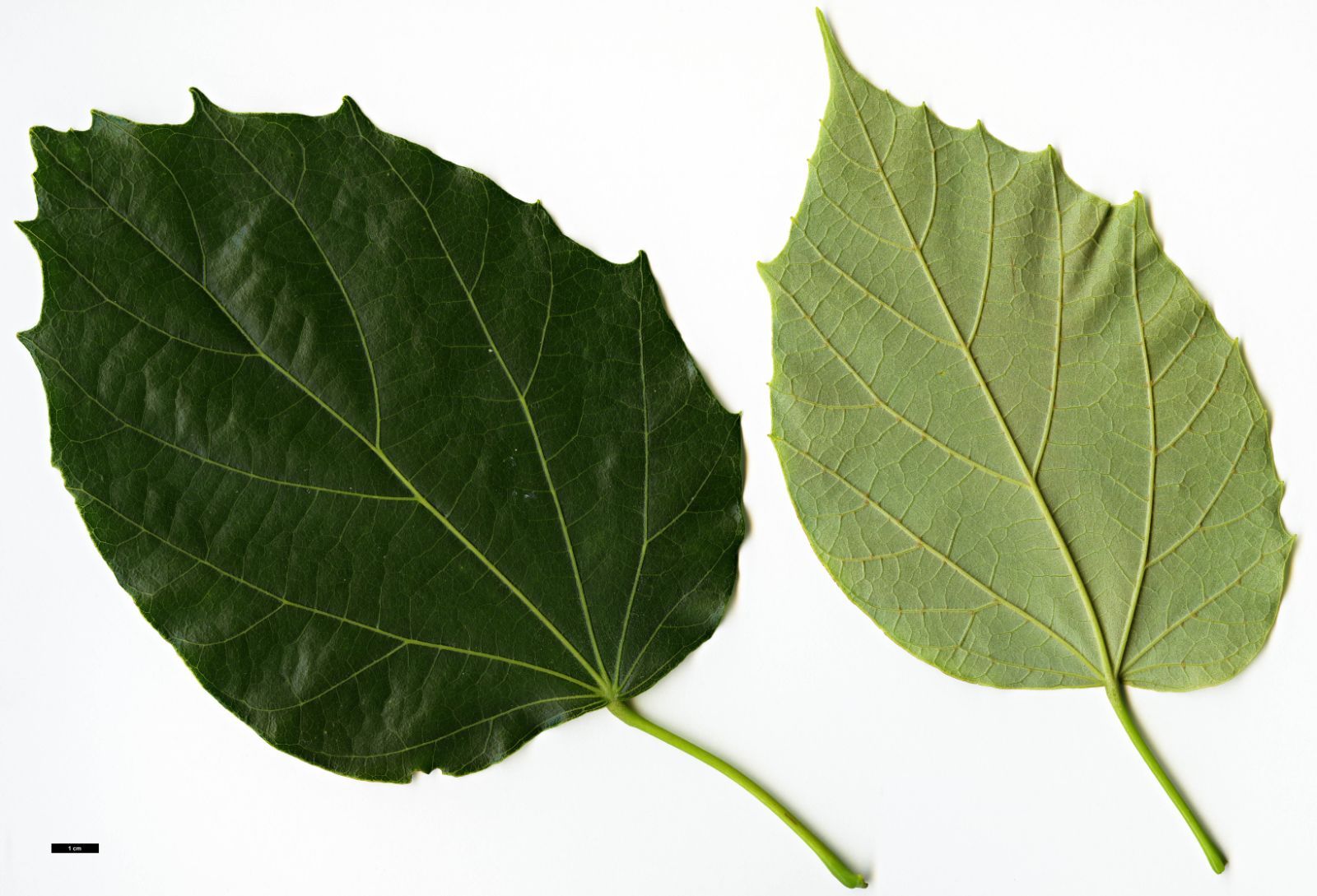Tilia endochrysea
Sponsor
Kindly sponsored by
a member of the International Dendrology Society
Credits
Owen Johnson & Julian Sutton (2020)
Recommended citation
Johnson, O. & Sutton, J. (2020), 'Tilia endochrysea' from the website Trees and Shrubs Online (treesandshrubsonline.
Other taxa in genus
- Tilia americana
- Tilia amurensis
- Tilia callidonta
- Tilia chinensis
- Tilia chingiana
- Tilia concinna
- Tilia cordata
- Tilia dasystyla
- Tilia × euchlora
- Tilia × europaea
- Tilia × flaccida
- Tilia × flavescens
- Tilia Hanwell Hybrids
- Tilia 'Harold Hillier'
- Tilia 'Harvest Gold'
- Tilia × haynaldiana
- Tilia henryana
- Tilia japonica
- Tilia × juranyana
- Tilia kiusiana
- Tilia mandshurica
- Tilia maximowicziana
- Tilia miqueliana
- Tilia mongolica
- Tilia nobilis
- Tilia × noziricola
- Tilia oliveri
- Tilia paucicostata
- Tilia platyphyllos
- Tilia tomentosa
- Tilia tuan
- Tilia 'Westonbirt Dainty'
Tree to 20 m. Bark grey, developing almost black longitudinal fissures with age. Twigs 2–4 mm thick, bright green, glabrous, and sometimes with a bluish waxy bloom. Bud no thicker than the shoot, almost spherical, glabrous, with 2 visible scales of almost equal length. Leaves flushing crimson, with relatively short glabrous stalks (2.5–6 cm); 7–13.5 × 5–11 cm, ovate to almost triangular; upper surface dark, shiny green, glabrous, lower surface pale green or glaucous, glabrous or covered with reddish stellate hairs, which mostly have 16 arms; margins sometimes entire or with large, irregular, spiky teeth or lobes. Floral bract 6.5–13 × 1.5–3 cm, diverging from the flower stalk near the base, with a variable stellate pubescence; often broadest towards each end; stalk of bract to 3 cm long. Inflorescences drooping, widely branched, with 8–32 deeply cup-shaped flowers; staminodes present. Fruit globose, initially fleshy, with a fragile wall, which splits longitudinally into 5 segments to release the ripe seeds. (Tang et al. 2007; Pigott 2012).
Distribution China Anhui, Fujian, Guangdong, Guangxi, Hunan, Jiangxi, Zhejiang
Habitat Forests, in valleys with well-drained soils.
USDA Hardiness Zone 8
RHS Hardiness Rating H4
Conservation status Least concern (LC)
Tilia endochrysea stands apart from other members of the genus, with the peduncle joined to the floral bract only at its base, and a dehiscent fruit. Pigott (2006) regards these features as primitive, and it is placed in its own Section Endochrysea. In cultivated material, the rather triangular leaves with just a few large and irregular teeth (or lobes) are also distinctive.
This is, however, a variable tree. The species was first described by Handel-Mazzetti in 1926, from a single specimen he collected from a solitary tree, in an extremely species-rich forest on Yun shan, Hunan, in the company of Emmenopterys henryi, Aesculus wilsonii and ten Lithocarpus species (Pigott 2012). Only a year later, Rehder (in Rehder & Wilson 1927) decribed three more closely related species from Anhui, based on leaf shape and pubescence, again from very limited specimens. The modern consensus, based on study of populations rather than individuals, is that all these represent a single, variable species (Pigott 2012).
It is extremely rare in cultivation, having apparently been introduced only once, as a single clone. The few semi-mature trees known in the United Kingdom (in private collections, at Kew, and in the Cambridge University Botanic Garden) are derived from scion wood collected by Donald and Sheila Pigott in the Wuzhi Shan, Guangdong in 1993 (Pigott 2006). The leaves of these trees open a dark crimson, perhaps their finest feature. They quickly age to dark green above with dense grey-white stellate hairs below, but variability was noted in the wild population. Seed from the same area sadly failed to germinate. Young plants have so far proved hardy in British conditions, but the new shoots are extremely frost sensitive and a sheltered position is advisable. Donald Pigott (2006) has noted that in northwestern England it has been defoliated by strong winds. One planted by Pigott in the relatively continental climate of the Cambridge University Botanic Garden had grown well to 8 m, dbh 14 cm by 2014 (Tree Register 2018). There are fine specimens at the Savill Garden and Thenford House.
In recent years it has been offered for sale by specialist nurseries in the United Kingdom from which it has subsequently been introduced to collections elsewhere, for example to continental Europe at Arboretum Wespelaar (accession 13114) where it is growing well (Arboretum Wespelaar 2019), and to North America, where a specimen was planted at the JC Raulston Arboretum in 2017 (J.C. Raulston Arboretum 2020).

